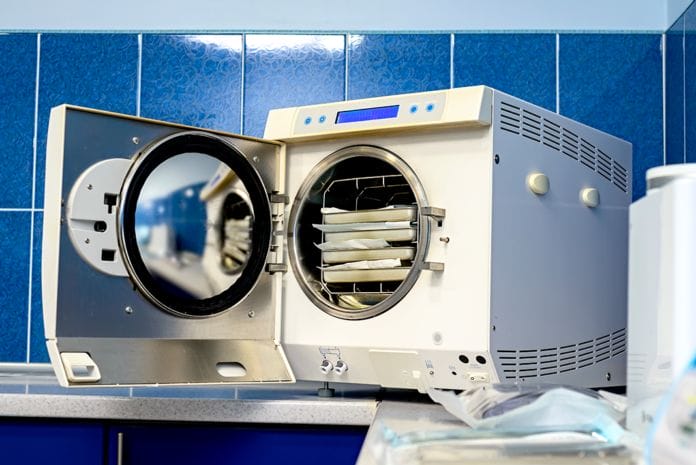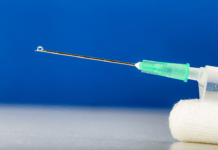I read one of your articles regarding infection control. Do slow-speed handpieces really need to be sterilized after every patient when using disposable prophy angles? We are currently sterilizing at the end of each workday.
Yes, slow-speed handpieces must be heat-sterilized in between every patient. Even though you use disposable prophy angles, and slow-speed handpieces are considered semi-critical devices, the Center for Disease Control and Prevention (CDC) explains they are an exception to the rule regarding disinfection and sterilization of semi-critical devices. The CDC states, “Studies have shown that handpieces can become contaminated internally with patient materials and the next patient may be exposed to potentially infectious materials.”1,4 The CDC goes on to state handpieces “should always be heat sterilized after each patient.”1,4 Due to the possible internal contamination of handpieces, barriers and surface disinfecting aren’t enough.
According to the 2003 CDC Guidelines for Infection Control in Dental Healthcare Settings, “Handpieces that cannot be heat sterilized should not be used.”4 This applies to handpieces that cannot be removed from a dental unit.
I should mention that the 2003 CDC Guidelines for Infection Control in Dental Healthcare Settings is current guidelines, though the CDC came out with a summary of the 2003 guidelines that included checklists in 2016. This makes the guideline for heat sterilizing slow-speed handpieces nearly two decades old. However, to be completely accurate about the age of this guideline, we have to go back even further because the 1993 Recommended Infection Control Practices for Dentistry Report from the CDC even recommended slow-speed handpieces to be heat-sterilized in between patients. The 1993 document specifically stated, “Routine between-patient use of a heating process capable of sterilization (i.e., steam under pressure [autoclaving], dry heat, or heat/chemical vapor) is recommended for all high-speed dental handpieces, low-speed handpiece components used intraorally, and reusable prophylaxis angles. Manufacturers’ instructions for cleaning, lubrication, and sterilization procedures should be followed closely to ensure both the effectiveness of the sterilization process and the longevity of these instruments. According to manufacturers, virtually all high-speed and low-speed handpieces in production today are heat tolerant, and most heat-sensitive models manufactured earlier can be retrofitted with heat-stable components.”5
Compliance with CDC recommendations is best achieved by purchasing multiple handpieces to allow time to heat sterilize each handpiece between every patient. Offices who are reluctant to invest in extra handpieces due to cost should remember that infection control and patient safety are top priorities, and buying multiple handpieces is the cost of doing business. This has been a CDC guideline for nearly three decades.
Now Check Out the Self-Study, Peer-Reviewed CE Courses from Today’s RDH!
Listen to the Today’s RDH Dental Hygiene Podcast Below:
References
- Centers for Disease Control and Prevention. (2016, March). Summary of Infection Prevention Practices in Dental Settings: Basic Expectations for Safe Care. Retrieved from http://www.cdc.gov/oralhealth/infectioncontrol/pdf/safe-care.pdf
- Chin J.R., Miller C.H., Palenik, C.J. (2006). Internal contamination of air-driven low-speed handpieces and attached prophy angles. J Am Dent Assoc. 137(9):1275-80. Retrieved from http://www.ncbi.nlm.nih.gov/pubmed/16946433
- Herd S., Chin J., Palenik C.J., Ofner S. (2007). The in vivo contamination of air-driven low-speed handpieces with prophylaxis angles. J Am Dent Assoc. 138(10):1360-5. Retrieved from http://www.ncbi.nlm.nih.gov/pubmed/17908851
- Kohn, W.G., Collins, A.S., Cleveland, J.L., Harte, J.A., Eklunt, K.J., Malvitz, D.M. Center for Disease Control and Prevention. Guidelines for Infection Control in Dental Health-Care Settings – 2003. MMWR 2003; 52 (Report No. 17). Retrieved from https://www.cdc.gov/mmwr/preview/mmwrhtml/rr5217a1.htm
- Recommended Infection-Control Practices for Dentistry, 1993. Centers for Disease Control and Prevention. MMWR 1993; 42 (No. RR-8). Retrieved from https://www.cdc.gov/mmwr/PDF/rr/rr4208.pdf












